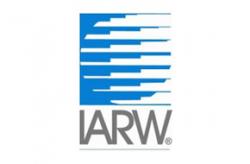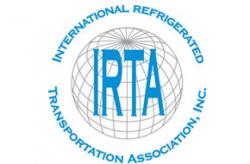Cold Chain Crossing
Operators in Canada, Mexico and the United States navigate the moment.
The ripple effect around the globe caused by supply chain disruptions at border ports along the U.S. Pacific Coast was documented in the January-February COLD FACTS cover article. But how has the cold chain industry at the borders to the north and south navigated bottlenecks, vaccine mandates, inventory fluctuations and driver and other labor shortages?
Although it is far from business as usual, meaning pre-pandemic, cold chain companies at the borders in Canada, the United States and Mexico are taking advantage of factors beyond their control to reinvent processes and find new opportunities to add value for their customers.
The Northern Border
To the north in Vancouver, Canada, Tim Ludwig, President of Bradner Cold Storage, believes the overarching issue is that the supply chain is not nearly as consistent as it used to be, whether overseas, cross border or even domestic. “Historically, most of the supply chain took a set it and forget it approach, but today it’s all about supply chain resiliency and customers and more than one way to handle challenges.” Ludwig says speed to market has always been a priority, but as port reliability becomes increasingly important, a consistent route is more valuable than a faster route. “The total lack of control over what goes on at port and the lack of predictability with overseas containers makes our customers take a fresh look at sourcing product from the southern United States and Mexico.” Pascal Truyen, Vice President of Sales and Marketing at VersaCold, says they had hoped all the congestion at the California ports would create opportunities for U.S. producers to use the cold storage company as exporters to ship out of Vancouver. “Unfortunately, the bottleneck crept up the coast and eventually Vancouver was backed up also and ports further north lack the necessary infrastructure.”
Redefining Inventory
Ludwig notes fresh produce from Asia historically followed a predictable arrival pattern, but now container shortages and port delays can result in half of the product being discarded in some cases. “As the yield on the product starts to fall, some of those products may need to be reevaluated,” Ludwig says. He points out that even though the company’s natural choice is the local Port of Vancouver, they are exploring other ports for other products or multiple ports to minimize risk. Nicholas Pedneault, President and CEO of Congebec, says the borders are as fluid as they can be given the current circumstances. “Supply chains were built for constant fluid motion to fulfill a just-in-time demand and economy, and that’s a model that cannot be sustained any further,” he says. “Nearshoring and looking at increased holdings as well as rethinking just-in-time manufacturing are all areas that are being explored in order to be less reliant on export and import activities and to bolster a fragmented supply chain.” “Increasingly, different channels are utilized for direct-to-consumer delivery, and it is now a permanent style of distribution and one of many supply chain issues disrupting inventory strategies,” Ludwig adds. “We’re holding justin-case stock and have a reduction in volume capacity despite all the challenges we have in this low vacancy market.
Driver Shortages and Vaccinations
The warehouse labor and driver markets remain a challenge, admits Truyen. And while they strongly encourage employees to get vaccinated, they believe a mandatory vaccination policy would exacerbate the labor shortages and potentially impact operations. From Truyen’s perspective, the main problem is the dearth of drivers. Since January 15, 2022, a Canadian regulation has been in place mandating Canadian drivers reentering the country from the United States have to quarantine for 14 days unless double vaccinated. “With drivers shifting from cross-border to domestic routes, we have seen an uptick in driver availability for us as we only operate domestically. But ultimately, further capacity shortages linger if the vaccine mandates for truck drivers will go into effect domestically, and we will have to be prepared,” concedes Truyen. “The reduced capacity for crossborder freight will impact us indirectly if prices increase due to more demand than capacity, and if our customers are delayed in shipping and have to ship directly to the end user without warehousing.” Pedneault’s perspective is driver shortages are a result of the increased number of retiring drivers, the hiring of unqualified drivers and subsequently an increased number of accidents and delays in obtaining parts to remain operational. And while Pedneault believes it is too early to see the long-term impact of the new vaccine mandate for truck drivers reentering the country, he notes there is a projected decrease of 270 million pounds of product crossing the border daily and a 12% to 15% decrease in available capacity. “At the moment, we are experiencing one to two-day delays at border control, however most Canadians drivers are vaccinated and that helps mitigate the consequences.” “The issue is trucks on the road are the weakest link in the supply chain as product moves from point A to point B,” Ludwig says. “We are likely to see a continued increase in rail, but the challenge is the interconnections – rail doesn’t end at the consumer’s door and typically involves drayage and port-to-rail connections.”
The Southern Border
“Today we observe a more interconnected, cross-border cold chain than ever before,” observes Mario Coronado, Chief Executive Officer at Qualianz in Mexico. “We increasingly serve the import/export border trade needs of our clients, particularly in recent months.” “In the beginning of the pandemic, all our facilities benefitted from an increase in volume causing inventory to expand, and this helped us a lot,” recalls Guillermo Castro, Regional Director at Frialsa Frigorificos in Mexico. “And then came the first impact, but it wasn’t at the border, it was the collapse of food service and all our customers in that market suffered.” On the U.S. side of the southern border, Mario Rodriguez, Manager, Cold Terminal of Laredo, Texas, notes there are some aspects of cold chain services at the border that are different than anywhere else in the country. “You have to know the culture of doing business at the border as there are a lot of moving parts.” Rodriguez says for U.S. cold storage companies at the border to service packing houses that are exporting protein to the United States and Canada, they need to comply with specific United States Department of Agriculture (USDA) entry requirements to be able to process these service requests.
One of these key requirements is having a USDA-approved lab/inspection facility. “In the United States, a truck comes in, you put the product in a freezer for two weeks, then it’s picked up and gone. At the border, you offer a value added unique service for proteins and produce.” George Cruz, Senior Vice President, Southern Region, United States Cold Storage in Laredo, notes the city is very close to the cold chain industry and facilitates inbound cargo very aggressively. “The city added more lanes and fast lanes and offered preapproved driver status to cross the border – all evidence of a strong focus on the food industry and attracting more business to Laredo.”
Price of Raw Materials
Castro notes another consequence of the pandemic is the reduction in border crossings from the United States into Mexico. “Big food factories close and storage starts to reduce at the same time as the price of raw materials is increasing because of the low supply of products. If there is low production in the United States, we pivot and receive that product from another country.”Coronado adds that in Mexico, as in the United States, there has been a spike in the cost of raw materials for food production, but in Mexico, prices have not followed suit. “Here, labor costs and availability are not a problem. Production costs more because of the price of raw material but production never slowed down in Mexico during the pandemic, and it is U.S. consumption that is driving prices higher than they are increasing in Mexico,” Coronado explains. “Therefore, it makes sense to export the product rather than sell it here, and it can offset the price increase from the raw materials.” To be certified by the USDA to ship from Mexico into the United States, structural changes were made to the facility and an inspector was hired to audit for USDA compliance to ensure product would pass inspection at the border, says Coronado. He adds it is extremely disruptive and very costly if you don’t get it right. “All the changes we made and retooling our process for certification were driven by demand, not something we pushed or planned, but it has added value and is very positive for our business.”
Inventory Trends
Cruz notes 2021 was a record sales year for retailers, which impacts inventory levels. “Many customers can’t keep product on the shelves – it’s getting sold as fast as it can be made or processed. This translates to smaller inventory held at the warehouse as it has to go to retailers to put on shelves.” Trying to get as close to just-in-time inventory levels as possible has been the industry’s standard operating procedure for years, says Coronado. “There is a risk to operating that way and the risk materialized. For the past 18 months in the United States, scarcity has been the name of the game for the food industry, and empty shelves are very disruptive for sellers and buyers,” Coronado acknowledges. “Now everyone is working to rebuild inventory at a higher safety level than pre-COVID.” The lack of products coming into Mexico from the United States because of labor issues in U.S. plants has caused consumption habits to change, according to Castro. “With a shortage of U.S. beef, Mexican factories started to look to other countries and different suppliers of raw materials as well as finished products,” he says. “Proteins, especially poultry, is arriving in Mexico through other ports and from other countries, like Brazil.”
Driver Shortages
In Mexico, a lack of border crossing/transfer truck drivers as well as long-haul truck operators are an issue impacting their customers, says Castro. “Our customers are finding it difficult to move product from Colombia (across the border from Laredo) to the distribution centers in Mexico City.” “With the shortage of drivers in the United States and Canada, it is very convenient for the United States to have this huge pool of commercial drivers across the border in Mexico,” Castro adds. “Now Mexico has a reduced number of long-haul drivers because they are looking for better opportunities elsewhere.” Castro says the number of transfer-only operators (who cross the border to Laredo, pick up a trailer and cross back with it to Mexico) is declining because they all want to be B1 operators. “Having that designation makes it much easier to get hired as they can cross the border and drive into the United States.
”Driver shortages are being supported by many companies that are hiring B1 drivers, says Cruz. B1 is a designation that permits Mexican nationals with worker’s and commercial driver’s permits to cross the border and drive further within the United States to make deliveries rather than being limited to border regions. “Historically, Mexican carriers crossed over and stayed within the U.S. border where the product would transload and go on its way or into our cold storage facilities,” Cruz notes. “Driver shortages have extended the avenue where the appropriate approvals and inspections can be obtained to points further north of the border. It’s a big concern here on the border that trucks will go further up and bypass our facilities.”
Outlook and Expectation
“Our ability to grow will depend very much on our customers’ ability to operate their business to their full potential despite geopolitics, the pandemic and global supply chain issues,” Truyen says. “Our focus remains on supporting our customers the best we can as we navigate these difficult times. And so far, we’re navigating really well and managing to partner with customers and grow the business.” “Volume is moving up and down the West Coast and we will increase volumes north and south based on confidence in the reliability of the supply chain as opposed to bringing product in by sea,” Ludwig points out. “It’s the least carbon-efficient way to move it but the most reliable when there are increases in volume.” Pedneault believes companies have never taken the supply chain seriously. “We see this on a daily basis and have to educate current and new customers on the nuances of the supply chain and its overall fragile nature,” he says. “Ultimately, it can be the single difference between growth and being dead in the water. The true impact is yet to come as the market starts to return.” He also believes in the need to focus efforts on agility and flexibility. “We need to have a contingency plan for everything we do, we have to drive increased holdings and become more self-sufficient (and pay more to do so) as a regional economy,” Pedneault says.
“The first half of 2021 was very difficult with lots of empty warehouses but now in my region we have better occupancy and different new projects and new value added services,” Castro points out. “Now, we continue to analyze new opportunities for our customers such as repacking and acting as a buffer at the border distribution center in order to export product on their behalf. That’s for an American company – that’s huge.” Avocado is one of the biggest commodities exported from Mexico and one of the biggest commodities his company handles, says Cruz. “Traditionally, avocado farms have been limited to one region in Mexico but now that has been expanded to multiple regions with different microclimates and growing seasons. We expect that expansion to continue in 2022.” Cruz says future growth depends on Mexican production increases. “I’m getting feedback from our customers’ projections that imports are going to be similar to 2021,” he says. “In Mexico, it’s an all-agricultural market and dependent on favorable weather and what happens with the weather is a force majeure. I’ve been in Laredo many decades and seen the highs and lows of what weather can do.” In addition, Cruz says labor shortages always must be considered whether in the United States or in Mexico and increased operational costs makes it difficult to manage growth for both sides.
Rodriguez says business looks promising, despite the challenges, and believes it is good times for the cold storage industry. “We see a positive trend in the border region. Mexico’s exports to the United States and Canada continue to rise so the border region is a booming area. The key is knowing the culture and how to continue to cultivate the Mexican market.” Coronado’s view is that most of the trends holding back growth for the industry in general are temporary, and once resolved, the industry is on track for rapid growth. And he expects present volumes to remain. “The factors that will unlock value and ultimately strengthen the cold supply chain – increased trade, heterogeneity in product consumption, safe inventory levels – will be material drivers of growth in the future.”
ALEXANDRA WALSH is a Senior Publishing Consultant with Association Vision and Editor-In-Chief of COLD FACTS.
EMAIL: awalsh@associationvision.com



